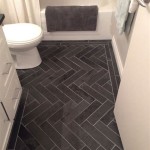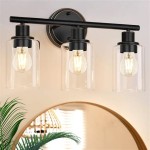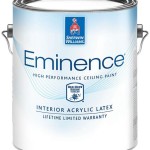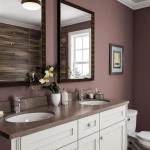Floor Tile Considerations for Small Bathrooms
Selecting the appropriate floor tile for a small bathroom requires careful consideration of several factors. The limited space necessitates choices that visually expand the room, enhance safety, and withstand the humid environment typical of bathrooms. The size, color, material, texture, and pattern of the tile all play crucial roles in achieving a successful and functional design.
A well-chosen floor tile can transform a cramped bathroom into a more comfortable and aesthetically pleasing space. Conversely, an ill-considered selection can exacerbate the feeling of confinement and lead to maintenance problems. Understanding the properties and characteristics of different tile options is therefore essential for making informed decisions.
Visual Expansion Through Tile Size and Color
The perception of space within a small bathroom can be significantly influenced by the size and color of the floor tiles. Larger tiles, contrary to intuitive assumptions, often create a sense of spaciousness. This is because fewer grout lines disrupt the visual flow, making the floor appear more expansive. Smaller tiles, while aesthetically pleasing in some contexts, can create a busy, fragmented look that makes a small room feel even smaller.
The optimal tile size will depend on the overall dimensions of the bathroom, but generally, tiles larger than 12x24 inches are suitable for small spaces. Very large format tiles, exceeding 24x48 inches, can further minimize grout lines and create a seamless appearance, but careful planning is required to ensure proper installation and minimize waste due to cutting.
Color plays an equally important role in the visual expansion of a small bathroom. Light and neutral colors, such as white, beige, light gray, and pastel shades, reflect more light, making the room appear brighter and more open. Dark colors, while potentially adding a touch of sophistication, absorb light and can make the space feel smaller and more enclosed. If dark colors are desired, they should be used sparingly as accents or in conjunction with lighter, reflective surfaces.
Furthermore, the color of the grout should be closely matched to the tile color to minimize visual contrast and maintain a seamless appearance. Contrasting grout lines can draw attention to the boundaries of the floor, emphasizing the limited space.
Material Selection: Durability and Water Resistance
The bathroom environment is characterized by high humidity and frequent exposure to water. Therefore, the selected floor tile material must be highly durable, water-resistant, and slip-resistant. Several materials are commonly used for bathroom floors, each with its own advantages and disadvantages.
Ceramic and porcelain tiles are popular choices due to their inherent water resistance, durability, and wide range of styles and colors. Porcelain tiles are denser and less porous than ceramic tiles, making them even more resistant to water absorption and staining. This makes porcelain a superior choice for areas that are frequently exposed to moisture, such as the shower area. The Porcelain Enamel Institute (PEI) rating system indicates the tile's resistance to abrasion; a higher PEI rating signifies greater durability.
Natural stone tiles, such as granite, marble, and slate, offer a luxurious and elegant aesthetic. However, they are generally more porous than ceramic or porcelain tiles and require sealing to prevent water absorption and staining. Some natural stones, such as marble, are also susceptible to etching from acidic substances. Regular maintenance and proper sealing are essential for preserving the beauty and longevity of natural stone floors in a bathroom environment.
Vinyl tiles and planks are a cost-effective and water-resistant alternative to ceramic, porcelain, and natural stone. Luxury vinyl tile (LVT) offers a realistic appearance that mimics natural materials, and it is also relatively easy to install. Vinyl flooring is generally softer and warmer underfoot than tile or stone, which can be a desirable attribute in a bathroom setting. However, vinyl is not as durable as ceramic, porcelain, or stone, and it may be susceptible to scratching and denting.
Regardless of the material chosen, it is crucial to select a tile with a sufficient slip-resistance rating to prevent accidents. The coefficient of friction (COF) is a measure of a tile's slip resistance; a higher COF indicates a greater resistance to slipping. Tiles with a COF of 0.6 or higher are generally recommended for bathroom floors.
Patterns and Textures for Enhancing Visual Interest
While light and neutral colors are generally recommended for small bathrooms, careful use of patterns and textures can add visual interest without overwhelming the space. Subtle patterns, such as a herringbone or chevron pattern, can create a sense of movement and depth without making the floor appear too busy.
Larger patterns should be avoided in small bathrooms, as they can accentuate the limited space. Small, repeating patterns can be effective, but they should be chosen carefully to avoid creating a cluttered or chaotic appearance.
Textured tiles can add tactile interest and enhance slip resistance. Tiles with a slightly textured surface provide better grip than smooth, polished tiles, especially when wet. Textures can also help to conceal dirt and water spots, making the floor easier to maintain.
Using grout strategically can also create interesting patterns. While matching the grout color to the tile color is generally recommended for minimizing visual disruption, using a slightly contrasting grout color can highlight the tile pattern and add a subtle visual accent. However, it is important to avoid using highly contrasting grout colors in small bathrooms, as this can create a busy and fragmented look.
Another technique is to incorporate accent tiles into the floor design. A border of decorative tiles or a small mosaic pattern can add a touch of personality and visual interest without overwhelming the space. Accent tiles should be chosen carefully to complement the overall color scheme and style of the bathroom.
The orientation of the tiles can also influence the perceived dimensions of the room. Laying rectangular tiles horizontally can make the room appear wider, while laying them vertically can make the room appear longer. Diagonal tile patterns can also create a sense of spaciousness, but they require more precise cutting and installation.
In addition to the tile pattern, the finish of the tile can also affect the overall aesthetic of the bathroom. Matte finishes tend to be more forgiving of imperfections and easier to maintain than glossy finishes. Glossy finishes can reflect more light, making the room appear brighter, but they can also be more slippery when wet and more prone to showing scratches and water spots.
Ultimately, the choice of floor tile for a small bathroom is a balance between aesthetic preferences, functional requirements, and budgetary considerations. By carefully considering the size, color, material, texture, and pattern of the tile, it is possible to create a bathroom floor that is both beautiful and practical.
Planning the layout and considering the placement of fixtures early in the design process will also greatly benefit the flooring selection. Knowing where the toilet, sink, and shower or bath will be located helps in determining the best tile size, pattern, and slip-resistance needed for optimal safety and visual appeal.
Professional installation is highly recommended, especially for intricate patterns or large format tiles. A properly installed floor will not only enhance the aesthetic appeal of the bathroom but also ensure its longevity and prevent potential problems such as water damage or uneven surfaces.

Small Spaces Can Be Glam Too

Small Bathroom Tiles Design Ideas For Wall Floor

The Best Of Bathroom Tile Ideas For Small Bathrooms Westside

73 Gorgeous Bathroom Tile Ideas From Designers

Stunning Small Bathroom Tile Design Ideas Cafe

Big Tile Or Little How To Design For Small Bathrooms And Living Spaces S Of America

50 Bathroom Tiles Design Ideas For Your Beautiful Home In 2024

The Best Of Bathroom Tile Ideas For Small Bathrooms Westside

15 Best Bathroom Tiles Designs That Make You Go Wow Livspace

Ceramic Matte Bathroom Floor Tile Size 2x2 Feet 600x600 Mm 20 80 Cm At 28 Sq Ft In Chennai







